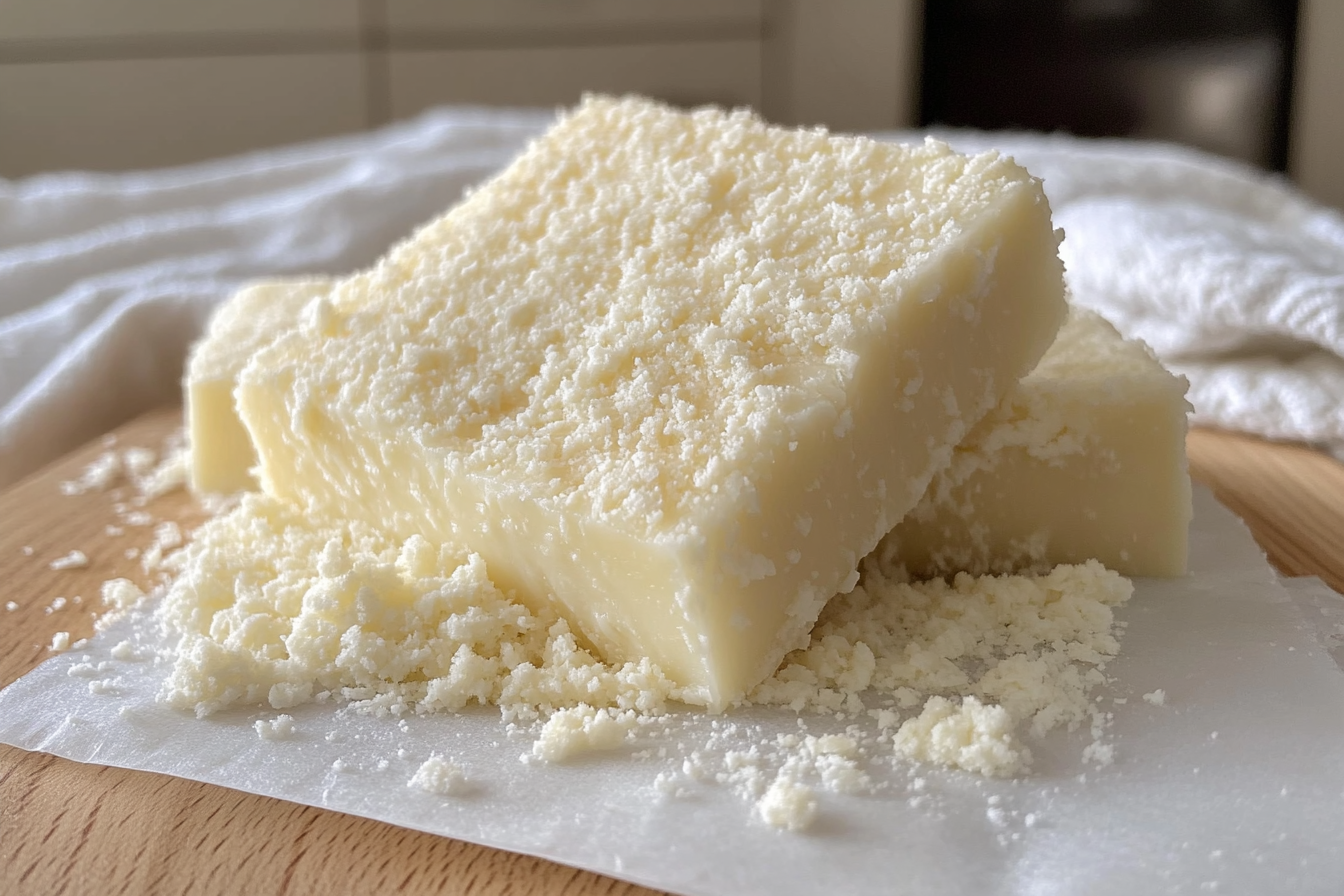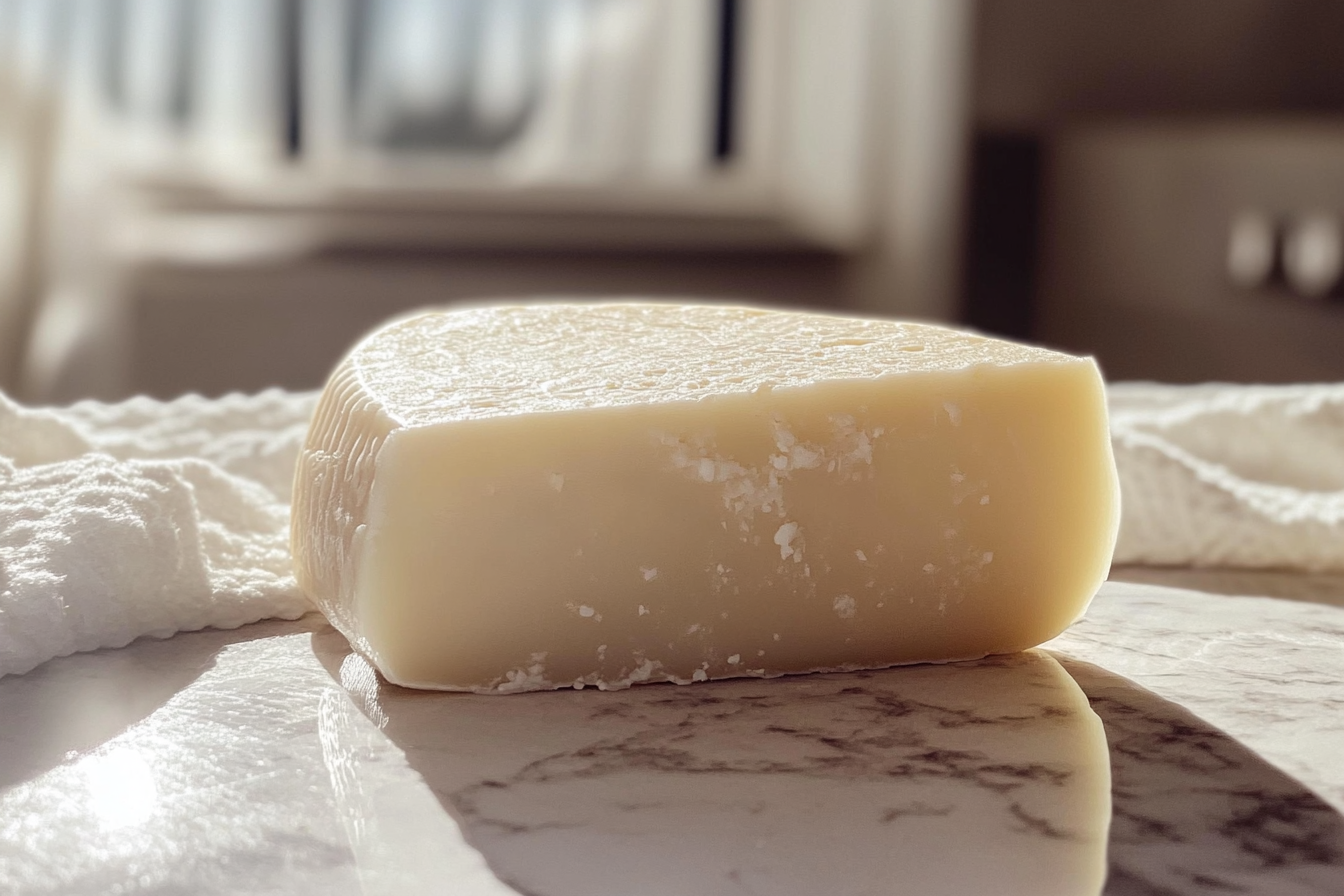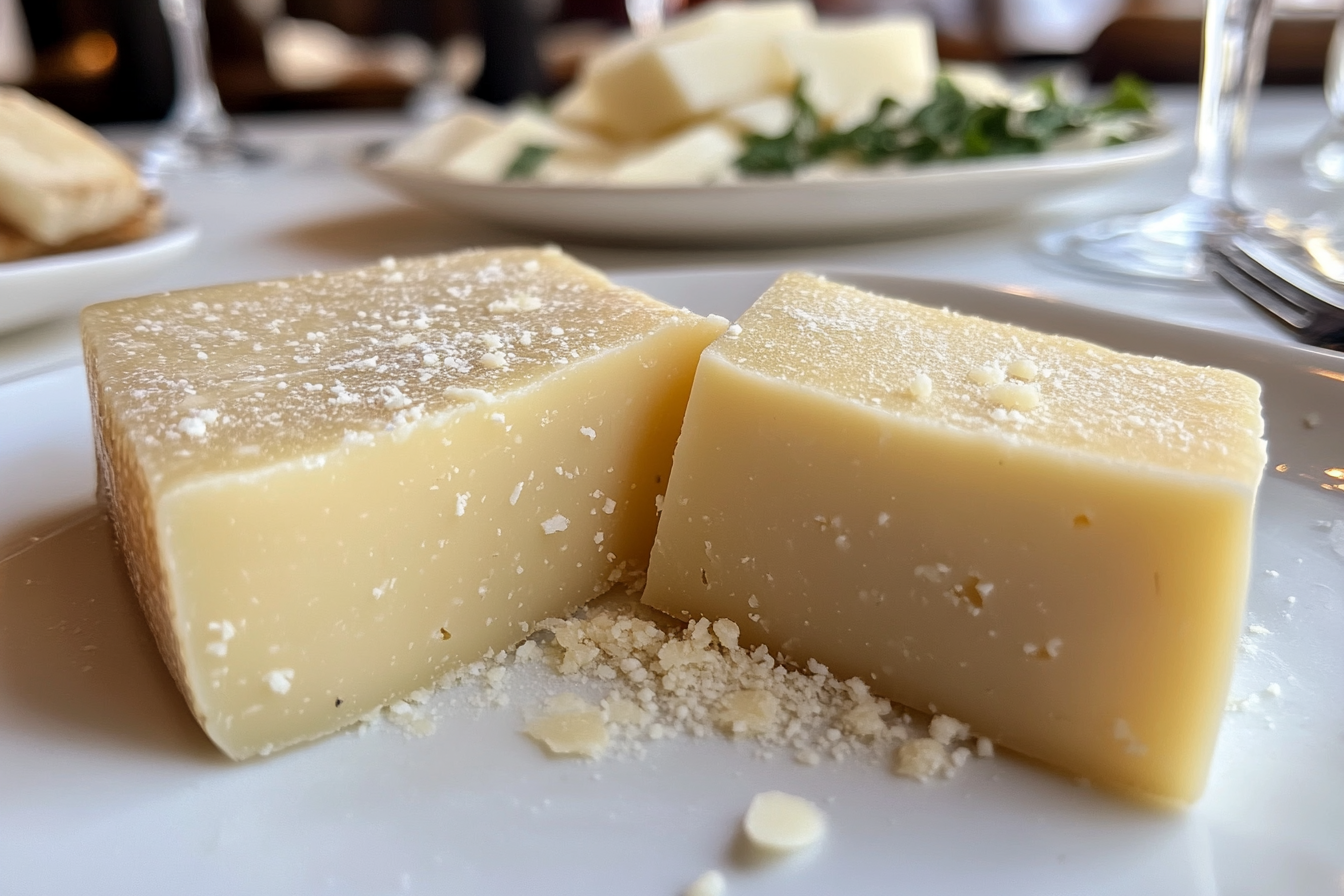Does pecorino cheese taste like? Pecorino cheese holds a special place in Italian culinary tradition, renowned for its sharp, salty, and tangy flavor. This sheep’s milk cheese is a fundamental ingredient in numerous Italian dishes, but its robust taste has earned it a global fanbase. Pecorino has several regional varieties, each offering a unique taste experience, but they all share the common trait of intense flavor. Whether grated over pasta, melted into sauces, or savored on its own, Pecorino can bring a bold kick to any dish.
But what exactly does Pecorino cheese taste like, and how does it vary across types and ages? In this article, we’ll explore its different varieties, the impact of aging on flavor, and the many ways Pecorino can be used in cooking. By the end, you’ll have a comprehensive understanding of what makes this cheese such a cherished ingredient in Italian cuisine.
What is Pecorino Cheese?
Pecorino is a family of hard Italian cheeses made from 100% sheep’s milk. The word Pecorino comes from pecora, the Italian word for sheep. Pecorino cheeses have been produced in Italy for thousands of years, with historical roots dating back to ancient Roman times. Traditionally, Pecorino was a staple in the diets of Roman soldiers, valued for its long shelf life and nutritional benefits. Over the centuries, it has evolved into a key component of Italian cooking, especially in dishes from central and southern Italy.
The Unique Flavor of Sheep’s Milk
The distinguishing factor of Pecorino is its sheep’s milk base. Sheep’s milk has a higher fat and protein content compared to cow’s milk, which gives Pecorino its rich, bold flavor. This makes Pecorino sharper and more intense than cheeses made from cow’s milk, like Parmesan or Grana Padano. The additional fat contributes to a creamy, rich mouthfeel, even though the cheese itself is firm and crumbly.
Different Varieties of Pecorino Cheese
Pecorino comes in several regional varieties, each with distinct characteristics based on where and how it’s produced. These varieties differ in texture, flavor, and aging time, but they all share the same fundamental sheep’s milk base.
1. Pecorino Romano
Pecorino Romano is the most famous variety of Pecorino. Cheesemakers in the Lazio region around Rome produce Pecorino Romano, known for its intense salty and sharp flavor. They age it for at least eight months,
giving it a firm, crumbly texture, and primarily use it as a grating cheese in dishes like Cacio e Pepe and Spaghetti alla Carbonara. This cheese’s flavor is so bold that a little goes a long way just a sprinkle can completely transform the taste of a dish.
2. Pecorino Toscano
Produced in Tuscany, Pecorino Toscano is a milder, sweeter variety of Pecorino. Producers typically age it for less time than Pecorino Romano, which gives it a softer texture and a more delicate flavor. Younger Pecorino Toscano has a fresh, grassy flavor with hints of sweetness, while the aged version develops nuttier, more complex flavors. Pecorino Toscano is often enjoyed as a table cheese, paired with honey, fruits, or nuts.
3. Pecorino Siciliano
Pecorino Siciliano hails from Sicily and is often made with added ingredients like black peppercorns, which give it a slightly spicy, peppery kick. This variety tends to be less salty than Pecorino Romano but still carries the tangy flavor typical of sheep’s milk cheeses. Pecorino Siciliano is often used in traditional Sicilian dishes like baked pasta or as part of an antipasti platter.
4. Pecorino Sardo
Pecorino Sardo, from Sardinia, comes in both young and aged forms. The younger version, known as Pecorino Sardo Dolce, has a mild, creamy flavor with a soft texture, while the aged version, Pecorino Sardo Maturo, is much sharper and more intense. The aged cheese develops a crumbly texture, and people often grate it over pasta or serve it with bread and olives.
Pecorino cheeses have been produced in Italy for thousands of years, with historical roots dating back to ancient Roman times. To learn more about the fascinating history of Pecorino, you can visit this detailed article on the history of Pecorino Romano.
For more on the different types of Pecorino and how to incorporate them into your cooking, check out the detailed Pecorino Cheese Guide.
What Does Pecorino Cheese Taste Like?
At its core, Pecorino cheese is defined by its sharp, salty, and tangy flavor profile. The sheep’s milk used in Pecorino production imparts a unique richness, with fat and protein contributing to the cheese’s complex taste.
The Role of Salt
One of the defining characteristics of Pecorino is its saltiness. Producers salt the cheese during production and age it for varying lengths of time, which intensifies its flavor. The salt not only acts as a preservative but also enhances the natural tanginess of the sheep’s milk. The longer producers age the cheese, the saltier and more concentrated its flavor becomes.
Tangy and Nutty Undertones
While saltiness is the dominant flavor in Pecorino, especially in varieties like Pecorino Romano, the cheese also has tangy and nutty undertones. These flavors come from the fermentation of the sheep’s milk, which develops over time as the cheese ages. The tanginess provides a refreshing contrast to the salt, while the nutty notes add depth and complexity to the overall taste.
Texture: Firm and Crumbly
Pecorino’s texture can range from soft and creamy in younger varieties to hard and crumbly in aged versions. For example, Pecorino Toscano is often soft enough to slice, while Pecorino Romano becomes so firm that people usually grate it. The cheese develops small crystals as it ages, giving it a slightly crunchy texture that enhances the eating experience.
Pecorino vs. Parmesan: What’s the Difference?
Although Pecorino and Parmesan are both hard Italian cheeses, they differ significantly in flavor, texture, and use. Understanding these differences can help you decide which cheese to use in your recipes.
Flavor
- Pecorino is made from sheep’s milk, giving it a sharper, saltier, and more tangy flavor.
- Parmesan (Parmigiano-Reggiano) is made from cow’s milk, resulting in a nuttier, sweeter, and more delicate taste.
Although you can grate both cheeses over pasta or salads, Pecorino’s bold flavor often overpowers more subtle ingredients, making it ideal for dishes that need a strong, salty component. Parmesan, on the other hand, offers more versatility and works well in a wider range of dishes without overwhelming the other flavors.
Texture
- Pecorino has a firmer, more crumbly texture due to its higher fat content and longer aging process.
- Parmesan is smoother and less crumbly, with a more granular texture.
This characteristic makes Pecorino ideal for grating over pasta dishes, while you can shave Parmesan into salads or use it in sauces for a creamier finish.
For more on the key differences between these cheeses, read Is Pecorino the Same as Parmesan?.
How Does Aging Affect Pecorino’s Taste?
The aging process plays a significant role in defining Pecorino’s flavor and texture. Cheesemakers age Pecorino for as little as a few months or as long as two years, with older cheeses offering more intense flavors and firmer textures.
Young Pecorino (3-6 months)
- Flavor: Milder, grassy, and slightly sweet with subtle tanginess.
- Texture: Softer and more pliable, ideal for slicing and eating with fruit or bread.
Aged Pecorino (9-12+ months)
- Flavor: Sharp, salty, and tangy, with stronger nutty undertones.
- Texture: Hard and crumbly, often containing crystals that add a slight crunch.
As Pecorino ages, its moisture content decreases, which in turn concentrates its flavor. Consequently, the cheese becomes firmer and more brittle, making it ideal for grating over pasta or salads. Additionally, the tangy and nutty flavors become more pronounced, offering a deeper and more complex taste experience.
How to Use Pecorino in Cooking
Pecorino’s bold flavor and firm texture make it a versatile cheese for a variety of dishes. Whether you’re grating it over pasta, incorporating it into sauces, or enjoying it on its own, Pecorino can elevate the flavor of almost any dish.
In Pasta Dishes
Pecorino is a key ingredient in many classic Italian pasta dishes, where its sharp, salty flavor shines through. Some popular dishes include:
- Cacio e Pepe: This Roman pasta dish relies on just a few ingredients: Pecorino Romano, black pepper, and pasta water. Mix the cheese with the hot pasta to create a creamy, salty sauce.
- Spaghetti alla Carbonara: In this dish, Pecorino Romano adds a salty bite to balance the richness of eggs and pancetta.
- Pasta alla Gricia: Often considered the precursor to carbonara, this dish combines Pecorino with guanciale for a simple yet flavorful pasta.
For more pasta inspiration, try Chickpea Pasta, which pairs beautifully with the tangy flavor of Pecorino.
In Salads and Soups
Grated Pecorino can add a burst of flavor to salads and soups. Its sharpness pairs well with leafy greens, roasted vegetables, and hearty soups.
- Salads: Sprinkle grated Pecorino over a fresh arugula salad, or pair it with roasted beets and balsamic vinegar for a delicious contrast.
- Soups: Add grated Pecorino to a bowl of minestrone or Italian vegetable soup to enhance the depth of the broth.
Common Misconceptions About Pecorino Cheese
Despite its popularity, there are several misconceptions about Pecorino cheese that are worth clarifying.
- Pecorino is too salty to eat on its own.
While Pecorino can be salty, especially aged varieties, younger versions like Pecorino Toscano have a much milder flavor and are perfect for snacking. - Pecorino is only for grating.
Many people consider Pecorino only a grating cheese, but you can also enjoy it in slices, especially with younger varieties that offer a softer texture. - Pecorino can be substituted with Parmesan.
While both cheeses are hard and often grated over pasta, their flavors are quite different. If a recipe calls for Pecorino, using Parmesan will result in a less salty, less tangy dish.
FAQs About Pecorino Cheese
Here are some commonly asked questions about Pecorino cheese:
- Does Pecorino cheese taste like Parmesan?
No, Pecorino is much sharper, saltier, and tangier compared to the nuttier, sweeter Parmesan. - Is Pecorino cheese sweet?
Pecorino is generally known for its salty and tangy flavor, but younger Pecorino may have a slightly sweet, grassy undertone. - Can you substitute Pecorino with Parmesan?
Yes, but the flavor will be different. Parmesan is less salty and sharp than Pecorino, making it a milder substitute. - Does Pecorino melt well for pizza?
Yes, Pecorino melts beautifully and adds a sharp, rich flavor to pizza.
Conclusion: Why You Should Try Pecorino Cheese
Does pecorino cheese taste like? Pecorino cheese is an incredibly versatile and flavorful ingredient that deserves a place in your kitchen. Whether you’re a fan of bold, salty flavors or you simply want to add an authentic Italian touch to your dishes, Pecorino is the perfect cheese to experiment with. Its sharp, tangy, and nutty flavors can elevate everything from pasta and pizza to salads and soups.
Incorporating Pecorino into your cooking brings a taste of Italy to your home and helps you discover why people have cherished this sheep’s milk cheese for centuries.



